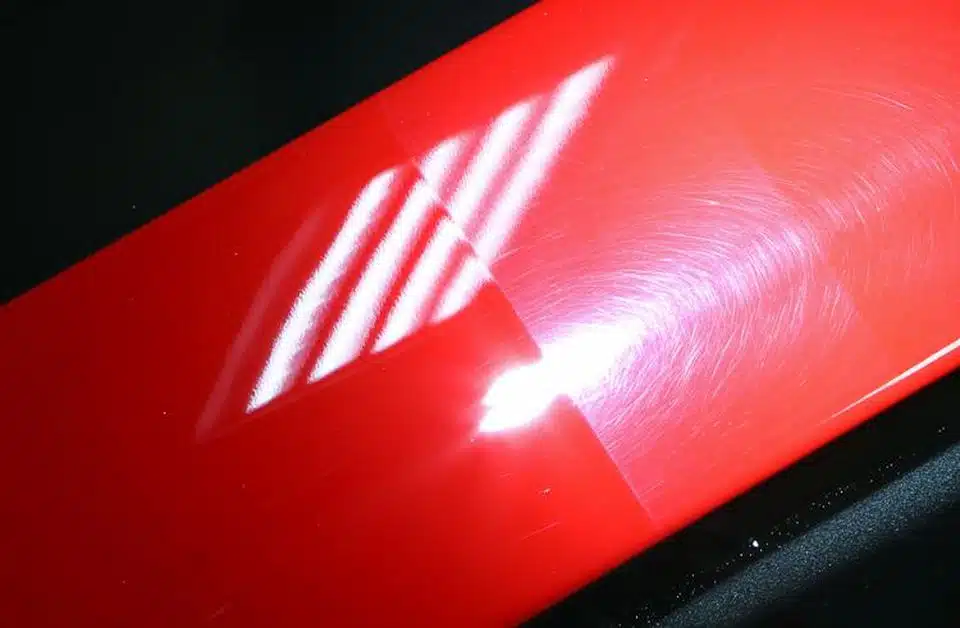Paint correction is a term that is now commonly used by both professional car detailers worldwide to describe the process of correcting in the form of restoring and rejuvenating the paintwork of a vehicle, mostly through the elimination of surface imperfections, that dull, oxidize, or haze the surface by reflecting light off in various directions, therefore detracting from a true and proper, clean, sharp, reflection. Paint Corrections fix imperfections including swirl marks & fine scratches, bird dropping etching & acid rain etching, buffer trails, and random isolated deep scratches.
An important step your detailer should take before starting the paint correction process is to do a decontamination wash. Making sure that all contaminants are removed beforehand. If this step is not done the contaminants could become loose and stuck in the polishing pad and inflict damage to the paint.
Some cars might just need a one-step polish, while others with heavier scratching might require multiple steps to get the paint back to peak shine. Usually, older cars that have not had kind of detailing work done before are the ones that require multiple step paint correction.

What To Look For in a Detail Shop?
Lighting and environment are very important. You do not detail cars outside, so plenty of lighting to ensure that the car is being polished correctly and that your detailer is seeing everything. If not done properly a paint correction could end up damaging your paint. Either by the paint getting “burned” from the polishing pad, the detailer missing things or from too much clear coat being removed.
Why Ghost Shield Film for paint correction?
You also want a clean detail shop that has an enclosed space where the car will be worked on. A dirty shop can result in debris on the vehicle that can get caught in the pad and damage your paint. It also means that if you have the car ceramic coated or a similar product it can result in debris in the coating. So clean and well lit are what you want when looking for a shop.
Paint Correction comes with Ceramic Coat at Ghost Shield Film
Your car should not be exposed to the elements when being detailed. It should be indoors and under a lot of lights. This can also become an issue if debris is blown or falls onto the vehicle during the detail. Large particles can get caught up in the pad and cause scratches to the paint.
Does Paint Correction Damage the Paint?

It can. But if your detailer knows what they are doing then your paint won’t be damaged. An inexperienced detailer can cause a lot of damage to the clear coat and paint on your vehicle. So you want to make sure you take your vehicle to a reputable shop.
You are slowly over time removing your clear coat. Making it thinner and weaker. More prone to the elements and damage. One way to combat this issue is to have the vehicle ceramic coated. This adds a harder layer of clear to the vehicle that is then polished off instead of your clear coat over time.
How Long Should it Take?
This will depend on the condition of the paint. Paint correction is a very labor-intensive project. It can take a couple of hours to days to do a proper paint correction. It is not a process that can be rushed.
It can also depend on how much prep works needs to be done to the vehicle. Sometimes the vehicle will need more than one wash to get it clean. Or more than one decontamination step. There might be sap that needs removing, or adhesive from a former sticker or product.
